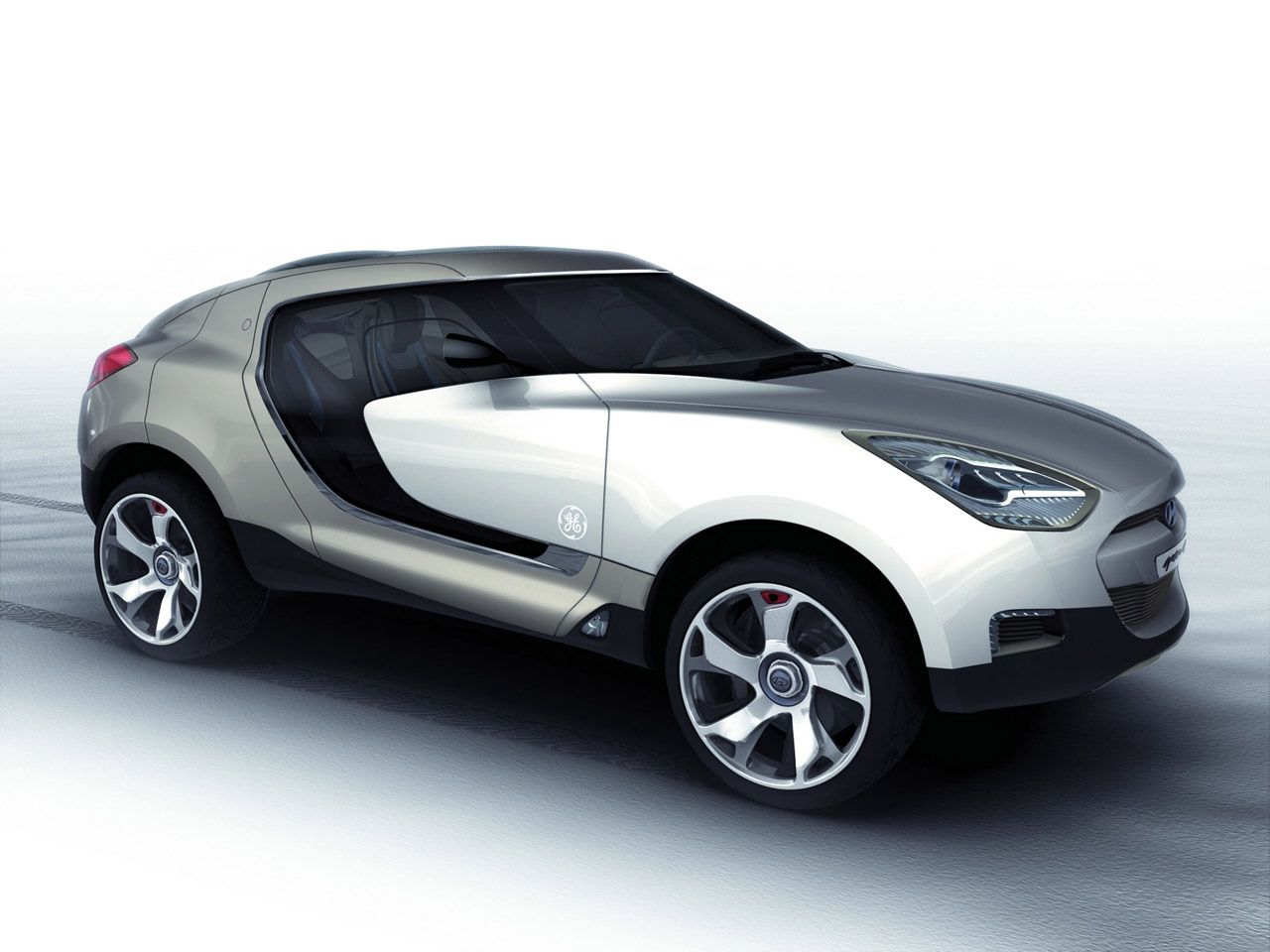Building eco-friendly models is at the top of most car makers’ hit lists these days. But Hyundai is working on combining fuel saving with technology to help reduce injuries to pedestrians in collisions.
And the first product of its research is the QarmaQ, a sporty 4×4 it says is a Crossover Utility Vehicle. But this concept car isn’t just special because of the technology it harbours. This is also the first time the firm has let a journalist behind the wheel of one of its experimental vehicles. The theory behind the QarmaQ is to reduce fuel consumption by saving weight. It uses plastic for the body panels and polycarbonate instead of glass, and tips the scales at 1,700kg, some 100kg lighter than the similarly sized Santa Fe.
One knock-on effect is that the hi-tech materials are easy to mould. This means engineers have been able to incorporate what they call the world’s first Elastic Front safety system. This sees three energy-absorbing structures inserted in front of the deformable bonnet.
What’s more, they’re fully recyclable, as they’re made from reclaimed drinks bottles. The plastic body panels have given designers a degree of freedom, too. Their aim wasn’t just to create a sporty shape; they wanted one that looked less aggressive than regular SUVs. As a result, the stylists have included distinctive C-shaped side windows. The lightweight polycarbonate has also allowed them to create a see-through bubble roof.
Access to the front seats is via wide-opening doors, while Mazda RX-8 style rear-hinged items ease entry to the back. Inside it feels spacious, thanks to the large glass area. The materials used around the cabin feature silicone and leather, which gives a wonderfully tactile feel. It makes for a calming environment with excellent visibility all round. The same goes for rear seat passengers, who have plenty of legroom and really benefit from the clear roof.
Thankfully, the panoramic glass and other transparent areas have been coated in an infra-red wash which reflects the heat. The effect of this is that owners shouldn’t have to rely so heavily on the air-con, again saving fuel. And the system works – at least part of it does! The day of our drive was hot and sunny, and although the air-con wasn’t operating, the interior remained at a bearable temperature.
A by-product of the weight-saving programme is that a 2.0-litre diesel engine is more than adequate to power the QarmaQ. Select Drive and it moves off with none of the sluggish behaviour usually associated with concept cars.
The engine, while noisy, is powerful enough for everyday driving, and actually gives quite a turn of speed. So does this point to a slightly smaller BMW X6 rival from Hyundai? Well, the firm certainly believes there’s a market for it. And while the looks of the QarmaQ might be too futuristic for Hyundai in the short term, it’s planning to incorporate the technologies of the design study into production models starting from next year.
Previous article
2009 BMW X6 – AC Schnitzer Aero Package



